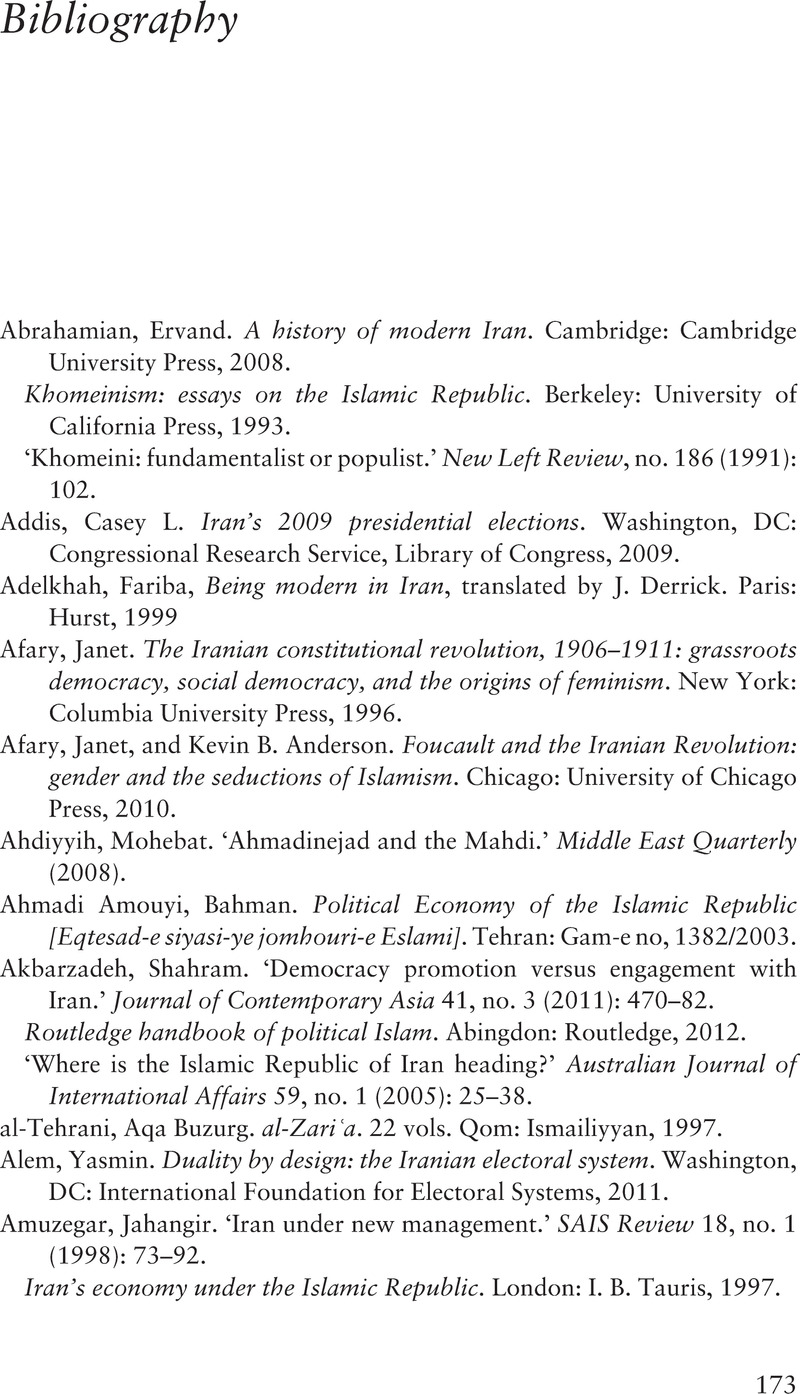Book contents
- Presidential Elections in Iran
- Presidential Elections in Iran
- Copyright page
- Contents
- Figures and Tables
- Abbreviations
- Introduction
- 1 Theoretical Framework
- 2 The Age of the ‘Imam’
- 3 The Era of Reconstruction and Reform
- 4 Ahmadinejad and Secularisation: Rupture or Continuity?
- 5 Consolidation of Secularity
- Conclusion
- Appendix Presidential Elections in a Nutshell
- Bibliography
- Index
- References
Bibliography
Published online by Cambridge University Press: 11 May 2021
- Presidential Elections in Iran
- Presidential Elections in Iran
- Copyright page
- Contents
- Figures and Tables
- Abbreviations
- Introduction
- 1 Theoretical Framework
- 2 The Age of the ‘Imam’
- 3 The Era of Reconstruction and Reform
- 4 Ahmadinejad and Secularisation: Rupture or Continuity?
- 5 Consolidation of Secularity
- Conclusion
- Appendix Presidential Elections in a Nutshell
- Bibliography
- Index
- References
Summary

- Type
- Chapter
- Information
- Presidential Elections in IranIslamic Idealism since the Revolution, pp. 173 - 181Publisher: Cambridge University PressPrint publication year: 2021
References
Bibliography
https://www.donya-e-eqtesad.com
https://www.washingtonpost.com
Etemad
Enghelabe Eslami
Ettelaat
Hamshahri
Iran
Jihad (periodical)
Jomhouri-e Eslami
Kalameh-Sabaz
Kayhan
Mardom
Mojahed
New York Times
Resalat
Salam
Sharq
The Times
Vatan-e Emrooz
United Press



